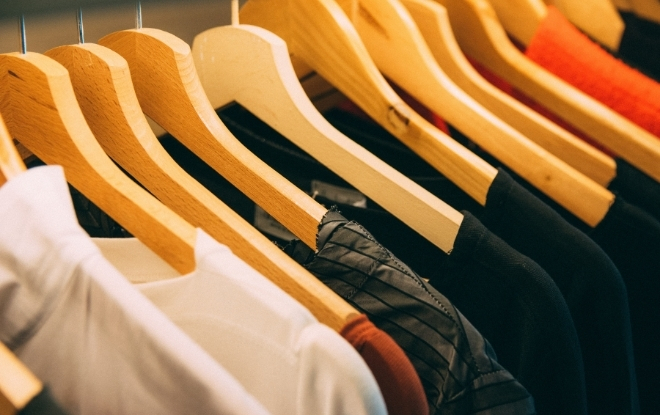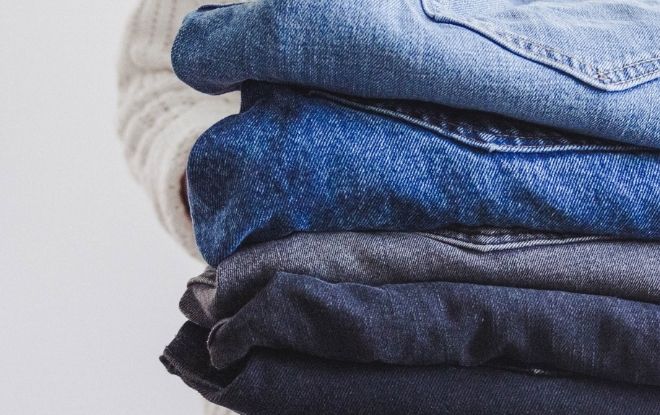Why I decided to break up with fast-fashion and quit shopping for a year.
9137 0
According to Google’s wisdom, recovering from a breakup takes half the amount of time that the relationship lasted. I spent 15 years being wooed by racks of the latest trends under florescent lights and streams of brightly coloured packages from seemingly never-ending online sales. Their persuasion was unrelenting—I needed them to be attractive and, if I’m honest, to feel worthy as a woman in today’s world. So, according to the internet’s theory, I should be good-to-go in about seven years!
But the truth is, after learning the facts of what my shopping habits were doing to people overseas, our planet, and my own sense of identity, it became pretty easy to close the door, once-and-for-all, on my exploitative ex.
In case you aren't yet acquainted with these startling stats:
+ Global clothing consumption has increased 400% over the last 20 years, with 80 billion new garments bought annually
+ It takes four days for a top fashion CEO to earn what a Bangladeshi garment worker will earn in their entire lifetime, yet around 98% of garment workers don’t earn enough to meet their basic needs
+ The fashion industry contributes 10% of global carbon emissions and is the second-largest freshwater polluter on earth (In China and India, it’s said that farmers can predict the “in” colour of the next season by looking at the rivers)

Global clothing consumption has increased 400% over the last 20 years, with 80 billion new garments bought anually.
Take a moment to let that sink in... It’s a lot. I know.
But it wasn’t just these facts alone that caused me to question everything about my way of consumption. Within a year and a half, I moved from my home in California to London, back to California and then to Auckland. And let me tell you...moving countries when you have an ever-increasing, already bulging wardrobe is not cheap. Before moving to New Zealand, I sat, overwhelmed, determined to give everything that couldn’t fit in a couple suitcases away to friends. I remember struggling to make decisions of what should stay and what should go—I felt suffocated by my own stuff.
So, I decided to give up buying anything fashion related (yes, even second-hand) for a year.
Let me be the first to acknowledge the privilege embedded within this situation: owning heaps of clothes, having the option to view this as a ‘challenge’. I also firmly believe it’s a privilege to have both the time and money to purchase in a way that aligns with our values.
But, that said, I’ve learned a few invaluable lessons along the way.
Shopping way less saves so... much... time! Gone are the days of mindlessly scrolling websites, adding a bunch of items to the cart, having heart convulsions from the subtotal, spending ages pairing down the cart to a still-expensive-but-slightly-less-anxiety-inducing amount, and then not actually buying anything until two more rounds of this process. Gone are the days of sitting in a dressing room in the middle of summer, sweating, alternating between two pairs of pants that look nearly identical while the shop assistant asks if I “need any help?” for the 18th time (no, I just can’t decide).
Instead of buying new, I’ve learned to fall back in love with what I already own. This takes some effort—playing dress up in your own closet and accepting that some combinations will horribly fail. It takes realising that clothes don’t need to stay in their designated categories...like discovering that throwing a silk number from ‘wedding season’ over a simple white tee with trainers is actually a fab casual look. Borrowing from friends (or your significant other) is also a real winner! I’ve commandeered all my husband’s oversized blazers to channel Princess Diana’s iconic look.

Instead of buying new fall back in love with what you already own.
Following the right people is also a game-changer. Getting notified of “this year’s biggest sale!” isn’t doing you any favours (especially when it mysteriously happens 12 times a year). Instead, follow brands and leaders in the ethical fashion space, and use on-the-go shopping companions like Tearfund’s Ethical Fashion Guide.
I learned to be content without consuming. At the heart of over-purchasing is dissatisfaction with what we have. Every day, we’re fed narratives that the next thing is the key to our happiness. Have you turned to shopping after a stressful day, a bad breakup? Maybe it was a missed promotion, or... a pandemic (too soon?). We’ve been trained to believe new things will fill the void and make us feel better—there's a reason it’s called ‘retail therapy’. But its effects wane quickly, leaving us just as sad as before—but now we’re sad with less money.
Retail-expert Victor Lebow captures it perfectly:
“Our enormously productive economy demands that we make consumption our way of life, that we convert the buying of goods into rituals, that we seek our spiritual satisfactions, our ego satisfactions, in consumption... The greater the pressures upon the individual to conform to safe and accepted social standards, the more he tends to express his individuality in terms of what he wears...We need things consumed, burned up, worn out, replaced, and discarded at an ever-increasing pace.”
It’s ironic, isn’t it? The more social pressure, the more we feel the need to prove our individuality through our clothes. We want to be perceived as unique but still socially acceptable, and this causes us to continually consume to fit each iteration of our ever-evolving desired image. Quite frankly, it's exhausting.
And that brings me to the final, and perhaps most important, lesson learned:
Fashion, in and of itself, is a beautiful thing.
I love fashion for its ability to infuse art into the seemingly mundane task of getting-dressed in the morning. But I don’t love when it's driven by an industry whose reliance on continuous sales growth through overproduction and overconsumption exploits the planet and millions of people. This year, I’ve already noticed a shift. The pieces I love the most are no longer limited to appearance... it also feels fab to wear a fabric that doesn’t take 342 million barrels of oil a year to produce and 200 years to decompose in a landfill (looking at you, polyester). No garment is cute enough to be worth the earth or someone’s life. When I eventually buy clothes again, I will be in control of every purchase. If I don’t know where it’s made, who made it, or how it’s made...it doesn’t belong in my collection.
Check out our latest Ethical Footwear Guide
Read Article